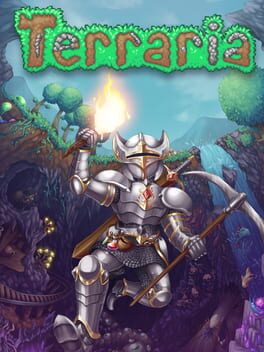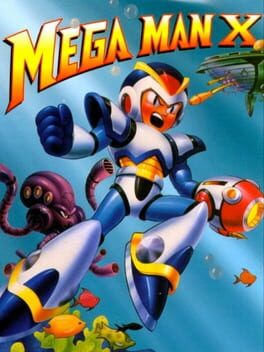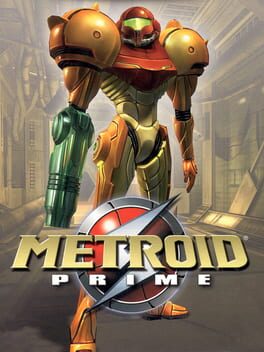WyattJames
Bio
Nothing here!
Badges

Noticed
Gained 3+ followers

On Schedule
Journaled games once a day for a week straight

Liked
Gained 10+ total review likes

Gone Gold
Received 5+ likes on a review while featured on the front page
010
Total Games Played
022
Played in 2024
000
Games Backloggd
Recently Played See More
Recently Reviewed See More
This review contains spoilers
Spoiler Level: Medium (specific mechanical and level spoilers, basic story spoilers)
CW: very minor swearing.
I played on a SNES with a CRT, got most of the upgrades, and died countless times. I also logged my opinions during play.
Mega Man X is a game I wish I’d gotten to sooner. It’s radical, and totally emblematic of what made the series a mainstay for three generations of consoles and then some. The level design is tight and crunchy, with varied platforming and tricky enemies. Likewise, the bosses pack a real punch, and the whole experience is rounded out with a healthy dose of exploration and hidden goodies.
Let’s talk about those levels. They take the form of linear gauntlets with occasional short branching paths, and they also keep their length in-check, avoiding excessive scope which might have deterred players when they inevitably run out of lives. There is some impressive variety here, with each level feeling distinct in both theme and form. Some are open and airy, others tight and claustrophobic, and all feature distinct set pieces and varied environments, with my personal highlight being the mech suit sections. Some levels also experience marked shifts after completing certain criteria, enhancing revisits and replays: Spark Mandrill’s stage experiences a power failure, gaining flickering lights and losing some electricity traps, while Flame Mammoth’s conveyor belts grind to a halt.
These linear gauntlets are peppered with enemies that tightly follow the classic model of introduction, development, and culmination. Difficulty scaling is organic, with levels selecting a reasonable subset of enemies and evolving their usage via clever placement and context rather than excessive variety or changing behavior. This empowers the player, benefitting observation more effectively than would be possible with more varied enemy types. Broadly, the roster of enemies is exceptional, and all are a joy to learn and defeat. Each stage is also capped off by a Robot Maverick fight which holistically tests the player’s accumulated skill.
Mega Man X thrives on progression. X transitions from a slow underdog to a lightning-fast cannon, capable of reducing enemies to mere dust without breaking a sweat. Character progression is intelligently left mostly optional, benefitting observant players and synthetic challenge runs alike. Optional upgrades include Reserve Tanks, stat upgrades, and core moveset extensions, with most requiring clever spatial reasoning or critical thinking; even plainly visible abilities, such as the dash, can be intentionally skipped. This leverages player expression brilliantly - the choice of order in which levels are tackled and the varying quantity of found upgrades inject variety into every playthrough. The mandatory upgrades are even more diverse while remaining mercifully ignorable, still permitting synthetic challenge runs. Each Robot Maverick that X defeats grants him a unique weapon, and they’re all good - my favorites are the Storm Tornado and the Homing Torpedo.
The game’s progression, level design, and enemy design all come to a zenith with the final gauntlet: Sigma’s Fortress. As it follows the standard levels, it is free to provide a sharp upward difficulty curve. Enemies and stage layouts are mixed in diabolical new ways, requiring exacting precision from the player. However, this is a Mega Man game, and the Maverick weapons come into their own here, each excelling in particular use cases and allowing the player to substitute some amount of precision for planning. It’s excellent. This extends to the new bosses, which punctuate each stage of Sigma’s Fortress with a hefty challenge.
Then, the player reaches the final boss, and it all goes to shit. Sigma presents a gargantuan difficulty spike that nearly breaks the game in two. A novice player will die. A novice player will die repeatedly. A novice player will die ad nauseam. It truly cannot be understated, and countless players have undoubtedly given up right before the finish line. Buckle up, because it’s time for the long haul.
The first phase is very reasonable. It will take a few tries to learn, but can be cleared quickly without taking damage. The second phase, however, is not so kind. Sigma’s movement is erratic, and his attacks are incredibly difficult to dodge. However, with enough perseverance, this too can be conquered, only for the final phase to toss the player from the frying pan into the fire.
It cannot be understated how unprecedented this is, but it gets worse. While the player is graced with effectively infinite lives and Reserve Tanks by way of the enemies directly preceding the fight, this grinding takes an excessive amount of time, and, more importantly, an excessive amount of wall jumps. This final boss caused me physical pain - the design really is that needlessly hostile. Additionally, a player may wish to comb the standard levels for additional upgrades, but this is a trap. For whatever reason, this resets the player’s progress through Sigma’s Fortress!* However, with enough tries, a determined player will defeat Sigma and finish the game.
As for the rest of the game - the nitty-gritty - Mega Man X is good. The music is passable but I wouldn’t go back to listen to any of it. Some levels contain annoying sections, such as the submarines in Launch Octopus’ stage, but they are ultimately minor. The slide could have been polished further, letting the player simply hold the button to achieve full air speed. Floating platforms could be less janky. Ultimately, however, these complaints are minor, and the game still shines brightly, despite the absurdity of the final boss fight.
So, can I recommend this game? Absolutely. Mega Man X remains thrilling to this very day.
*This may have been caused by a password load between sessions, but it is still utterly goofy.
CW: very minor swearing.
I played on a SNES with a CRT, got most of the upgrades, and died countless times. I also logged my opinions during play.
Mega Man X is a game I wish I’d gotten to sooner. It’s radical, and totally emblematic of what made the series a mainstay for three generations of consoles and then some. The level design is tight and crunchy, with varied platforming and tricky enemies. Likewise, the bosses pack a real punch, and the whole experience is rounded out with a healthy dose of exploration and hidden goodies.
Let’s talk about those levels. They take the form of linear gauntlets with occasional short branching paths, and they also keep their length in-check, avoiding excessive scope which might have deterred players when they inevitably run out of lives. There is some impressive variety here, with each level feeling distinct in both theme and form. Some are open and airy, others tight and claustrophobic, and all feature distinct set pieces and varied environments, with my personal highlight being the mech suit sections. Some levels also experience marked shifts after completing certain criteria, enhancing revisits and replays: Spark Mandrill’s stage experiences a power failure, gaining flickering lights and losing some electricity traps, while Flame Mammoth’s conveyor belts grind to a halt.
These linear gauntlets are peppered with enemies that tightly follow the classic model of introduction, development, and culmination. Difficulty scaling is organic, with levels selecting a reasonable subset of enemies and evolving their usage via clever placement and context rather than excessive variety or changing behavior. This empowers the player, benefitting observation more effectively than would be possible with more varied enemy types. Broadly, the roster of enemies is exceptional, and all are a joy to learn and defeat. Each stage is also capped off by a Robot Maverick fight which holistically tests the player’s accumulated skill.
Mega Man X thrives on progression. X transitions from a slow underdog to a lightning-fast cannon, capable of reducing enemies to mere dust without breaking a sweat. Character progression is intelligently left mostly optional, benefitting observant players and synthetic challenge runs alike. Optional upgrades include Reserve Tanks, stat upgrades, and core moveset extensions, with most requiring clever spatial reasoning or critical thinking; even plainly visible abilities, such as the dash, can be intentionally skipped. This leverages player expression brilliantly - the choice of order in which levels are tackled and the varying quantity of found upgrades inject variety into every playthrough. The mandatory upgrades are even more diverse while remaining mercifully ignorable, still permitting synthetic challenge runs. Each Robot Maverick that X defeats grants him a unique weapon, and they’re all good - my favorites are the Storm Tornado and the Homing Torpedo.
The game’s progression, level design, and enemy design all come to a zenith with the final gauntlet: Sigma’s Fortress. As it follows the standard levels, it is free to provide a sharp upward difficulty curve. Enemies and stage layouts are mixed in diabolical new ways, requiring exacting precision from the player. However, this is a Mega Man game, and the Maverick weapons come into their own here, each excelling in particular use cases and allowing the player to substitute some amount of precision for planning. It’s excellent. This extends to the new bosses, which punctuate each stage of Sigma’s Fortress with a hefty challenge.
Then, the player reaches the final boss, and it all goes to shit. Sigma presents a gargantuan difficulty spike that nearly breaks the game in two. A novice player will die. A novice player will die repeatedly. A novice player will die ad nauseam. It truly cannot be understated, and countless players have undoubtedly given up right before the finish line. Buckle up, because it’s time for the long haul.
The first phase is very reasonable. It will take a few tries to learn, but can be cleared quickly without taking damage. The second phase, however, is not so kind. Sigma’s movement is erratic, and his attacks are incredibly difficult to dodge. However, with enough perseverance, this too can be conquered, only for the final phase to toss the player from the frying pan into the fire.
It cannot be understated how unprecedented this is, but it gets worse. While the player is graced with effectively infinite lives and Reserve Tanks by way of the enemies directly preceding the fight, this grinding takes an excessive amount of time, and, more importantly, an excessive amount of wall jumps. This final boss caused me physical pain - the design really is that needlessly hostile. Additionally, a player may wish to comb the standard levels for additional upgrades, but this is a trap. For whatever reason, this resets the player’s progress through Sigma’s Fortress!* However, with enough tries, a determined player will defeat Sigma and finish the game.
As for the rest of the game - the nitty-gritty - Mega Man X is good. The music is passable but I wouldn’t go back to listen to any of it. Some levels contain annoying sections, such as the submarines in Launch Octopus’ stage, but they are ultimately minor. The slide could have been polished further, letting the player simply hold the button to achieve full air speed. Floating platforms could be less janky. Ultimately, however, these complaints are minor, and the game still shines brightly, despite the absurdity of the final boss fight.
So, can I recommend this game? Absolutely. Mega Man X remains thrilling to this very day.
*This may have been caused by a password load between sessions, but it is still utterly goofy.
This review contains spoilers
Spoiler level: High. Expect specific mechanical and story spoilers.
I played version 1.0 of the GameCube version of Metroid Prime, on a Wii, with a widescreen mod. Although I do own the game, I used Nintendont, which may have improved the game’s performance. I achieved 74% completion with most objects scanned and all but one E-tank, judging by the HUD.
The controls are passable. Tank controls may feel like an odd choice, but they are probably the best scheme that the controller could accommodate; dual-stick aiming would have heavily compromised the button mapping, and the controller’s trigger buttons would have worsened the feel of the weapons, as most sport a one-press, one-shot scheme, which keeps combat frantic and direct. The existing controls are also poorly tuned. Cycling between enemies with the lock-on is finicky at best, as is target acquisition. Weapon switch speed, while fine for combat, bogs down traversal, as all doors require the correct beam to open, even after being unlocked once. Samus also turns too slowly, feeling more like Jill Valentine than a bounty hunter.
Metroid Prime’s true zenith lies within its masterful progression and atmosphere. Samus herself demonstrates the widest gulf, granting a taste of power during the prologue before her upgrades are stripped away, then slowly expanding her capabilities until she can dispatch any enemy with ease. The world similarly shifts; initially, Samus encounters only naturalistic enemies and ancient structures, with adventurous music befitting an uninhabited planet. Over time, the Space Pirates and their modern structures eventually begin to reveal themselves, accompanied by a foreboding score. These industrial complexes present the atmospheric highlights of the game: the music pauses, the lights go dark, Samus is in trouble, and it’s up to her to turn the tables. Her actions have a real effect on the world, and eventually, the Space Pirate logs scattered throughout the world reflect this, mentioning them directly and becoming increasingly panicked over time. This holistic approach to progression sells just how much of a cannon Samus becomes: the world fears her very presence.
Combat likewise shines, with enemies that vary greatly in strength and strategy. Samus Aran’s attacks sport great depth - there are four main beams, each with a charge attack and an unlockable combo attack, missiles, and fringe attacks like the Morph Ball Bomb. Most enemies are broadly vulnerable, but certain combinations hold valuable niches; for instance, the Ice Beam and a missile can dispatch stronger enemies quickly, but only if the player develops high accuracy. Deep into the game, however, the exceptionally powerful Plasma Beam obsoletes the other options. Seemingly as a counter to this, enemies vulnerable only to specific beams are introduced, distilling their encounters to a simple weapon selection. Still, the combat remains enjoyable, if a little heavy on enemy spam near the end, treating Samus’ newfound power more as an avenue for catharsis than a game breaker.
Tallon IV’s level design is very intentional. Instead of featuring a vast world filled with grand vistas and cities, it instead mostly sports cramped indoor areas and walled-off outdoor courtyards. This is clearly a level design concession - it keeps the world’s scale in check - but it removes a sense of placeness from the world. The world also features other artificialities, such as a high amount of platforming. Initially, platforms and environmental hazards integrate with the environment, but eventually these are replaced with arbitrary floating platforms spaced just far enough apart to be cumbersome, and Samus’ lack of movement options renders them boring. Despite this, the world remains chock-full of secrets, and many of them are telegraphed well, even if they are not yet obtainable with Samus’ current gear. Overall the level design is quite palatable, keeping the pace reasonable and the brain spinning.
At least, reasonable most of the time. This game has some of the most volatile backtracking I have ever seen in a game.
Metroid Prime features no fast travel system, which is an admirable design goal, but its areas are too linear. For instance, reaching Phendrana Drifts from the Tallon Overworld presents a ten-minute-long trek, consisting largely of walking and extremely basic platforming. Samus is provided with some movement upgrades, but these save little on backtracking at best. The double jump provides decent time saves in earlier areas, but none for later areas which expect it. The Grapple Beam, conversely, is unlocked criminally late into the game, rendering it mostly useless.
Enemy progression also permeates nearly every area of the game, and while I praised it earlier, it can also turn backtracking into a chore. The worst example, Chozo Ghosts, appear throughout the Chozo Ruins later in the game. By this time, Samus is powerful enough to handily defeat them, and yet they constantly grind down the pace of backtracking. Samus also cannot reliably target them without the X-Ray visor, elevating their annoyance until it is acquired.
Additionally, the Chozo Artifacts are gated rather arbitrarily, best illustrated by the Tower of Light. A player may decide to do some early backtracking through the ruins with the knowledge that the artifact is present, reach the tower, and complete the upper section. Despite this, without the Gravity Suit, the player is pointlessly stuffed from actually obtaining the artifact, forced to spend twenty minutes returning later. It is a blatantly arbitrary lock that is unfortunately repeated elsewhere.
This all puts the player in a tough position - he or she can either backtrack early to potentially gain some artifacts and useful upgrades, but likely spend multiple extra boring hours on the game because of this, or instead the player may choose to defer backtracking until the end of the game, completely destroying the pace of the finale. This volatility has the potential to turn backtracking, which usually acts as a respite that relaxes the pace and tension, into a complete pace-breaker.
Lastly, the game suffers from a few minor oversights. While most camera controls can be inverted, the map’s controls cannot be. The map likewise suffers from a combination of transparency and poor shading, which cause frequent depth confusion. Lastly, the visor transparency setting affects both decorative and functional elements, such as the mini map, health and ammo displays, and beam selection. These should have been separate sliders.
Overall, Metroid Prime leaves me conflicted. On one hand, I love the combat, the exploration, the atmosphere, and the sense of mystery presented by the world, but on the other hand, dry backtracking and an overall lack of challenge leave it sitting somewhere short of true greatness. Still, it will easily hold one’s interest enough to see it through.
I played version 1.0 of the GameCube version of Metroid Prime, on a Wii, with a widescreen mod. Although I do own the game, I used Nintendont, which may have improved the game’s performance. I achieved 74% completion with most objects scanned and all but one E-tank, judging by the HUD.
The controls are passable. Tank controls may feel like an odd choice, but they are probably the best scheme that the controller could accommodate; dual-stick aiming would have heavily compromised the button mapping, and the controller’s trigger buttons would have worsened the feel of the weapons, as most sport a one-press, one-shot scheme, which keeps combat frantic and direct. The existing controls are also poorly tuned. Cycling between enemies with the lock-on is finicky at best, as is target acquisition. Weapon switch speed, while fine for combat, bogs down traversal, as all doors require the correct beam to open, even after being unlocked once. Samus also turns too slowly, feeling more like Jill Valentine than a bounty hunter.
Metroid Prime’s true zenith lies within its masterful progression and atmosphere. Samus herself demonstrates the widest gulf, granting a taste of power during the prologue before her upgrades are stripped away, then slowly expanding her capabilities until she can dispatch any enemy with ease. The world similarly shifts; initially, Samus encounters only naturalistic enemies and ancient structures, with adventurous music befitting an uninhabited planet. Over time, the Space Pirates and their modern structures eventually begin to reveal themselves, accompanied by a foreboding score. These industrial complexes present the atmospheric highlights of the game: the music pauses, the lights go dark, Samus is in trouble, and it’s up to her to turn the tables. Her actions have a real effect on the world, and eventually, the Space Pirate logs scattered throughout the world reflect this, mentioning them directly and becoming increasingly panicked over time. This holistic approach to progression sells just how much of a cannon Samus becomes: the world fears her very presence.
Combat likewise shines, with enemies that vary greatly in strength and strategy. Samus Aran’s attacks sport great depth - there are four main beams, each with a charge attack and an unlockable combo attack, missiles, and fringe attacks like the Morph Ball Bomb. Most enemies are broadly vulnerable, but certain combinations hold valuable niches; for instance, the Ice Beam and a missile can dispatch stronger enemies quickly, but only if the player develops high accuracy. Deep into the game, however, the exceptionally powerful Plasma Beam obsoletes the other options. Seemingly as a counter to this, enemies vulnerable only to specific beams are introduced, distilling their encounters to a simple weapon selection. Still, the combat remains enjoyable, if a little heavy on enemy spam near the end, treating Samus’ newfound power more as an avenue for catharsis than a game breaker.
Tallon IV’s level design is very intentional. Instead of featuring a vast world filled with grand vistas and cities, it instead mostly sports cramped indoor areas and walled-off outdoor courtyards. This is clearly a level design concession - it keeps the world’s scale in check - but it removes a sense of placeness from the world. The world also features other artificialities, such as a high amount of platforming. Initially, platforms and environmental hazards integrate with the environment, but eventually these are replaced with arbitrary floating platforms spaced just far enough apart to be cumbersome, and Samus’ lack of movement options renders them boring. Despite this, the world remains chock-full of secrets, and many of them are telegraphed well, even if they are not yet obtainable with Samus’ current gear. Overall the level design is quite palatable, keeping the pace reasonable and the brain spinning.
At least, reasonable most of the time. This game has some of the most volatile backtracking I have ever seen in a game.
Metroid Prime features no fast travel system, which is an admirable design goal, but its areas are too linear. For instance, reaching Phendrana Drifts from the Tallon Overworld presents a ten-minute-long trek, consisting largely of walking and extremely basic platforming. Samus is provided with some movement upgrades, but these save little on backtracking at best. The double jump provides decent time saves in earlier areas, but none for later areas which expect it. The Grapple Beam, conversely, is unlocked criminally late into the game, rendering it mostly useless.
Enemy progression also permeates nearly every area of the game, and while I praised it earlier, it can also turn backtracking into a chore. The worst example, Chozo Ghosts, appear throughout the Chozo Ruins later in the game. By this time, Samus is powerful enough to handily defeat them, and yet they constantly grind down the pace of backtracking. Samus also cannot reliably target them without the X-Ray visor, elevating their annoyance until it is acquired.
Additionally, the Chozo Artifacts are gated rather arbitrarily, best illustrated by the Tower of Light. A player may decide to do some early backtracking through the ruins with the knowledge that the artifact is present, reach the tower, and complete the upper section. Despite this, without the Gravity Suit, the player is pointlessly stuffed from actually obtaining the artifact, forced to spend twenty minutes returning later. It is a blatantly arbitrary lock that is unfortunately repeated elsewhere.
This all puts the player in a tough position - he or she can either backtrack early to potentially gain some artifacts and useful upgrades, but likely spend multiple extra boring hours on the game because of this, or instead the player may choose to defer backtracking until the end of the game, completely destroying the pace of the finale. This volatility has the potential to turn backtracking, which usually acts as a respite that relaxes the pace and tension, into a complete pace-breaker.
Lastly, the game suffers from a few minor oversights. While most camera controls can be inverted, the map’s controls cannot be. The map likewise suffers from a combination of transparency and poor shading, which cause frequent depth confusion. Lastly, the visor transparency setting affects both decorative and functional elements, such as the mini map, health and ammo displays, and beam selection. These should have been separate sliders.
Overall, Metroid Prime leaves me conflicted. On one hand, I love the combat, the exploration, the atmosphere, and the sense of mystery presented by the world, but on the other hand, dry backtracking and an overall lack of challenge leave it sitting somewhere short of true greatness. Still, it will easily hold one’s interest enough to see it through.
Spoiler level: low. Expect basic mechanical and design spoilers.
I was never a Disney kid. I've seen maybe two episodes of the original DuckTales TV show, but that was years ago, making this game pretty much completely fresh to me. I have also never played the original for any significant amount of time. For this review, I played the Steam version.
The gameplay is solid and direct, with laid-back platforming and clever treasure hunting summing up to a wonderful and light-hearted romp through colorful locales. This plot is likewise pleasant; a high variety of well-paced and nicely-written hijinx grants the feel of a real Saturday-morning cartoon, delivered by a fantastic performance from the surviving members of the original cartoon’s cast. Accommodations are also made for players who are unfamiliar with the source material; character backgrounds and motivations are provided by crystal-clear visual design and clever writing which avoids lengthy exposition dumps.
The levels are littered with countless secrets to find; the most common are simple gems and health, generally revealed when Scrooge navigates over a specific tile, but the levels also feature more interesting navigational challenges. Alternate paths are disguised cleverly, and the player may even occasionally move above the screen to find hidden rooms. While unintuitive at first, once the player is made aware of their existence, the telegraphy of such secrets becomes quite effective. The game also occasionally rewards patient players with treasure that can be permanently missed by overly-hasty players, encouraging thoughtful play.
I’d like to take a moment to praise the money scoring system. I find it impossible to care about score in most classic games; most such systems grant points for damn-near anything, including benign tasks that the player will repeat ad-nauseum anyway. They feel like an afterthought, which is remedied in two manners by DuckTales Remastered. Firstly, the gallery, which was not present in the NES game, allows the player to purchase various pieces of media. It provides decent extrinsic motivation for racking up money, but has some issues. Categories of art should be unlocked through other means than merely spending money, and some of the types of concept art could be consolidated; as it stands, the gallery is a bit padded, and cannot be remotely completed with a single playthrough. The other boon to the scoring system is that it is deliberate. All money is procured in the form of treasure, and treasures do not respawn, converting points from a vague motivator to a self-imposable high-score challenge. Players with little interest in searching the nooks and crannies of each level can safely ignore the score system, while those who enjoy it are granted the secondary challenge of scouring for every last bit of treasure, complementing the level design excellently. All said, I thoroughly enjoyed racking up money. This also indirectly heightens enemy design. Since most enemies provide no money, they are free to respawn when the player walks away from them, keeping areas lively even after traversal.
One element that pleasantly surprised me was the quality of the bosses. Maybe it’s because years of exposure to Mario games has rotted my brain, but the bosses of DuckTales Remastered were remarkably challenging and fresh for a 2D platforming game. I am unsure of how much they were updated from the original game, but each boss, with maybe one exception, had a varied-yet-fair attack pattern that I would not usually associate with games of similar vintage, making each a joy to fight.
I must also praise the music, since it’s all good stuff. Each stage features its own catchy tune, and some stages even sport dynamic music. The final main level theme in particular is a well-renowned classic from the NES game, and this new version holds up brilliantly.
It isn’t all sunshine and roses, however. The controls are slightly suboptimal, particularly in regards to the cane. In most areas it feels just fine, but when spikes are overhead, performing repeated low bounces can occasionally twist one’s thumbs into spaghetti noodles. Additionally, the fact that enemies respawn but health pickups do not can occasionally feel unfair, though I never personally found it to be a dire flaw. Another design error comes in the form of the minecarts. Most of the time, jumping from a minecart requires no directional input, as Scrooge retains the cart’s momentum. However, whenever a minecart falls into a pit, this is suddenly inverted, and an unprepared player will plummet straight down to his or her death; Scrooge will even unintuitively lose his momentum mid-jump, depending on the jump’s timing. This caught me off-guard numerous times due to poor telegraphing, and even resulted in a game-over.
The game also suffers from some minor technical failures, the most notable of which being the awful input lag. I wanted to play on my plasma television, but it suffers from approximately 43 milliseconds of lag; this rarely bothers me, but DuckTales Remastered adds several frames of lag on top of this, resulting in a sludgy experience. I moved to a lag-free computer monitor, which mostly remedied the issue, but this is obviously ridiculous. Additionally, control rebinding was finicky. I played with a Switch Pro controller using Steam Input, which worked well most of the time, except when I attempted to use the game’s built-in button remapping. Somehow, this resulted in the jump button and attack button merging, making Scrooge whack any adjacent walls with the cane instead of jumping. This may not be the game’s fault, but it still happened. Lastly, the game is a bit picky about which display it wants to use, but this is easily fixed with a configuration file tweak or the win+shift+arrow hotkey to move the window between monitors.
Overall, should you buy DuckTales Remastered? Sure, if you can find a copy! It's been unavailable digitally for a few years now, but it’s a standout example of a treasure-hunting platformer with loads of charm and care put into it.
I was never a Disney kid. I've seen maybe two episodes of the original DuckTales TV show, but that was years ago, making this game pretty much completely fresh to me. I have also never played the original for any significant amount of time. For this review, I played the Steam version.
The gameplay is solid and direct, with laid-back platforming and clever treasure hunting summing up to a wonderful and light-hearted romp through colorful locales. This plot is likewise pleasant; a high variety of well-paced and nicely-written hijinx grants the feel of a real Saturday-morning cartoon, delivered by a fantastic performance from the surviving members of the original cartoon’s cast. Accommodations are also made for players who are unfamiliar with the source material; character backgrounds and motivations are provided by crystal-clear visual design and clever writing which avoids lengthy exposition dumps.
The levels are littered with countless secrets to find; the most common are simple gems and health, generally revealed when Scrooge navigates over a specific tile, but the levels also feature more interesting navigational challenges. Alternate paths are disguised cleverly, and the player may even occasionally move above the screen to find hidden rooms. While unintuitive at first, once the player is made aware of their existence, the telegraphy of such secrets becomes quite effective. The game also occasionally rewards patient players with treasure that can be permanently missed by overly-hasty players, encouraging thoughtful play.
I’d like to take a moment to praise the money scoring system. I find it impossible to care about score in most classic games; most such systems grant points for damn-near anything, including benign tasks that the player will repeat ad-nauseum anyway. They feel like an afterthought, which is remedied in two manners by DuckTales Remastered. Firstly, the gallery, which was not present in the NES game, allows the player to purchase various pieces of media. It provides decent extrinsic motivation for racking up money, but has some issues. Categories of art should be unlocked through other means than merely spending money, and some of the types of concept art could be consolidated; as it stands, the gallery is a bit padded, and cannot be remotely completed with a single playthrough. The other boon to the scoring system is that it is deliberate. All money is procured in the form of treasure, and treasures do not respawn, converting points from a vague motivator to a self-imposable high-score challenge. Players with little interest in searching the nooks and crannies of each level can safely ignore the score system, while those who enjoy it are granted the secondary challenge of scouring for every last bit of treasure, complementing the level design excellently. All said, I thoroughly enjoyed racking up money. This also indirectly heightens enemy design. Since most enemies provide no money, they are free to respawn when the player walks away from them, keeping areas lively even after traversal.
One element that pleasantly surprised me was the quality of the bosses. Maybe it’s because years of exposure to Mario games has rotted my brain, but the bosses of DuckTales Remastered were remarkably challenging and fresh for a 2D platforming game. I am unsure of how much they were updated from the original game, but each boss, with maybe one exception, had a varied-yet-fair attack pattern that I would not usually associate with games of similar vintage, making each a joy to fight.
I must also praise the music, since it’s all good stuff. Each stage features its own catchy tune, and some stages even sport dynamic music. The final main level theme in particular is a well-renowned classic from the NES game, and this new version holds up brilliantly.
It isn’t all sunshine and roses, however. The controls are slightly suboptimal, particularly in regards to the cane. In most areas it feels just fine, but when spikes are overhead, performing repeated low bounces can occasionally twist one’s thumbs into spaghetti noodles. Additionally, the fact that enemies respawn but health pickups do not can occasionally feel unfair, though I never personally found it to be a dire flaw. Another design error comes in the form of the minecarts. Most of the time, jumping from a minecart requires no directional input, as Scrooge retains the cart’s momentum. However, whenever a minecart falls into a pit, this is suddenly inverted, and an unprepared player will plummet straight down to his or her death; Scrooge will even unintuitively lose his momentum mid-jump, depending on the jump’s timing. This caught me off-guard numerous times due to poor telegraphing, and even resulted in a game-over.
The game also suffers from some minor technical failures, the most notable of which being the awful input lag. I wanted to play on my plasma television, but it suffers from approximately 43 milliseconds of lag; this rarely bothers me, but DuckTales Remastered adds several frames of lag on top of this, resulting in a sludgy experience. I moved to a lag-free computer monitor, which mostly remedied the issue, but this is obviously ridiculous. Additionally, control rebinding was finicky. I played with a Switch Pro controller using Steam Input, which worked well most of the time, except when I attempted to use the game’s built-in button remapping. Somehow, this resulted in the jump button and attack button merging, making Scrooge whack any adjacent walls with the cane instead of jumping. This may not be the game’s fault, but it still happened. Lastly, the game is a bit picky about which display it wants to use, but this is easily fixed with a configuration file tweak or the win+shift+arrow hotkey to move the window between monitors.
Overall, should you buy DuckTales Remastered? Sure, if you can find a copy! It's been unavailable digitally for a few years now, but it’s a standout example of a treasure-hunting platformer with loads of charm and care put into it.







